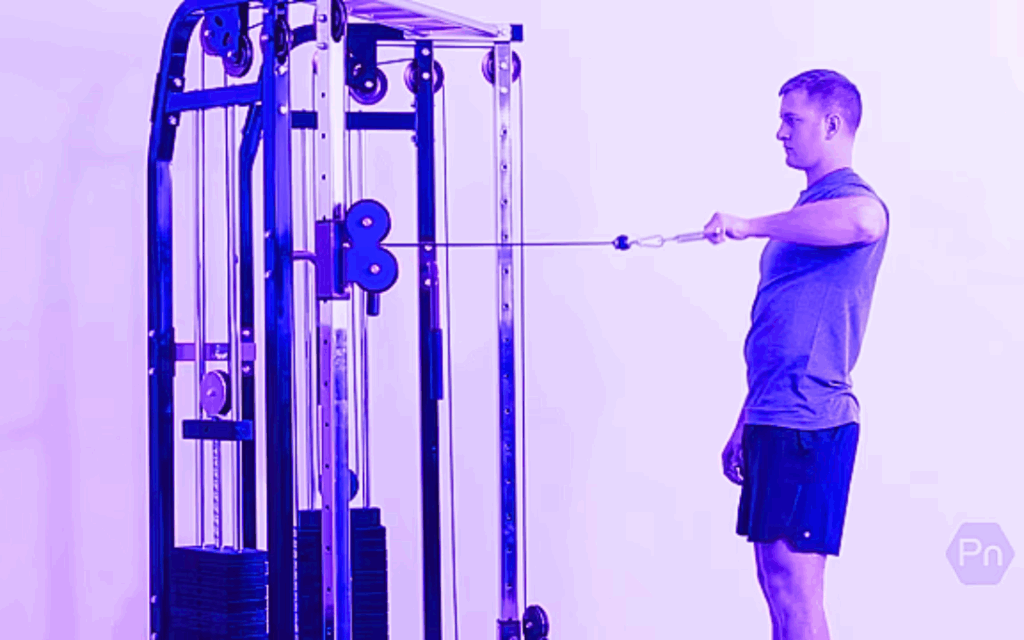(Or: How to Forge Armor-Plated Shoulders Without Sacrificing Function)
Let’s cut through the fog: Cable External Rotation at 90 Degrees Abduction isn’t just another shoulder exercise—it’s a surgical strike on weakness, imbalance, and the kind of joint fragility that turns athletes into spectators. If you’ve ever winced reaching for a suitcase, felt your shoulders “click” during bench press, or watched your delts plateau while your ego burned, this is your antidote. But only if you’re willing to train smarter, not just harder.
What It Is (And Why Your Shoulders Crave It)
Picture this: You’re a marionette. Your strings? The rotator cuff—four muscles that literally dictate whether your shoulders move like buttered ball bearings or rusted hinges. Most lifters hammer their delts with presses and raises, leaving these critical stabilizers neglected. Enter the Cable External Rotation at 90° Abduction: a laser-focused drill that rebuilds shoulder integrity while carving detail into the often-overlooked rear delts and infraspinatus.

Courtesy of Precision Nutrition
Science in a Nutshell:
- At 90 degrees abduction (arms out like a “T”), the rotator cuff works overtime to stabilize the humerus.
- External rotation under load forces these muscles to fire synergistically—improving scapular control, boosting overhead strength, and giving your physique that coveted “3D shoulder” pop.
“Most shoulder injuries aren’t accidents—they’re slow-motion betrayals,” says Eugene Thong, CSCS. “This exercise is your insurance policy.”
Who It’s For (And Who Should Walk Away)
DO THIS IF YOU:
✓ Lift heavy but feel “loose” during presses.
✓ Play overhead sports (baseball, swimming, CrossFit).
✓ Want rear delts that look chiseled, not camouflaged.
✓ Are rehabbing a shoulder injury (with clearance).
SKIP IT IF YOU:
✗ Have acute shoulder pain (fix that first).
✗ Prioritize ego lifts over joint health.
✗ Think “functional training” is a buzzword.
Pros vs. Cons: No Bullshit
| Pros | Cons |
|---|---|
| Bulletproofs shoulders for heavy lifting | Requires cable machine (no dumbbell hacks) |
| Enhances muscle symmetry + aesthetics | Easy to butcher form (we’ll fix that) |
| Boosts throwing velocity, swim stroke power | Not a mass-builder; it’s a refiner |
“This isn’t about getting jacked—it’s about staying in the game,” notes Charles Damiano, B.S. Clinical Nutrition. “Your future self will cash the checks you write today.”
How to Nail It: Step-by-Step
- Set Up: Attach a D-handle to a cable machine at elbow height. Stand sideways, arm abducted 90 degrees (parallel to floor), elbow bent 90 degrees.
- Grip: Hold the handle like you’re shaking hands with destiny.
- Move: Rotate your arm outward, keeping elbow pinned at 90 degrees. Squeeze the rear delt HARD at the top.
- Return: Control the weight back—2 seconds out, 3 seconds back.
Cues to Live By:
- “Break the cable”: Imagine snapping the handle apart to engage the infraspinatus.
- “Elbow as a hinge”: No flaring. No dipping. Just pure rotation.
- “Breathe through your ribs”: Stay tight, but don’t turn into a statue.
WATCH THE STEP-BY-STEP VIDEO BELOW
3 Mistakes That Turn Gold Into Garbage
- Using Too Much Weight: This isn’t a tug-of-war. “If you’re swinging, you’re wrong,” says Thong.
- Letting the Elbow Drop: 90 degrees abduction. 90 degrees elbow bend. No compromises.
- Rushing the Eccentric: The negative builds resilience. Rob it, and you rob your results.
Programming: Where It Fits
- For Athletes: 3 sets of 12-15 reps, 2x/week (post-training).
- Bodybuilders: Pair with lateral raises for a rear-delt superset from hell.
- Rehab: Light weight, high reps (20-30), daily.
Final Rep
The Cable External Rotation at 90 Degrees Abduction isn’t sexy. It won’t fill your Instagram feed with plates or PRs. But it will arm you with shoulders that function like a Swiss watch—precise, relentless, and built to outlast the grind. Because real strength isn’t just what you lift. It’s what you don’t break.
YOUR NEXT STEPS:
